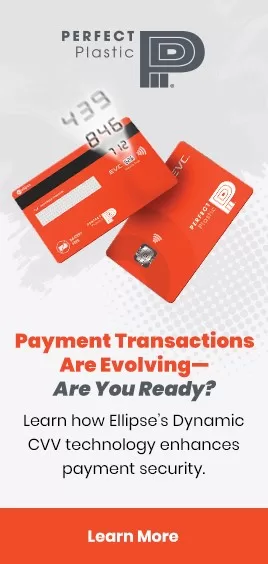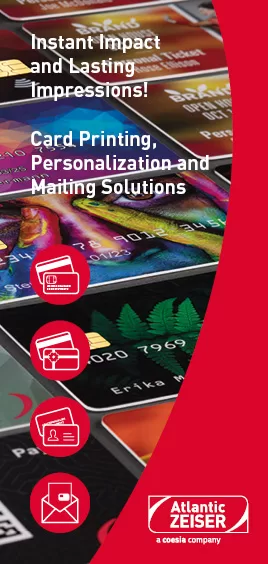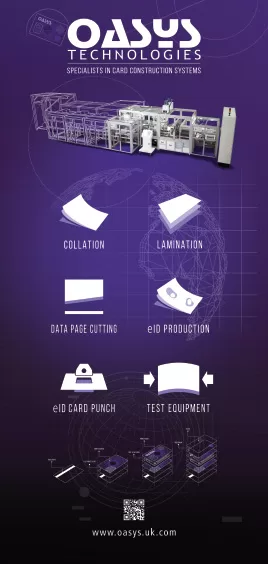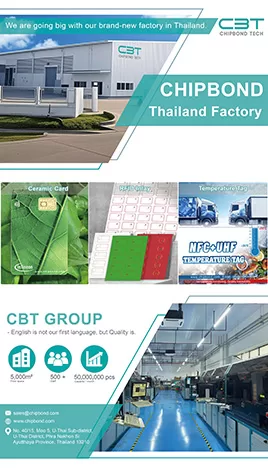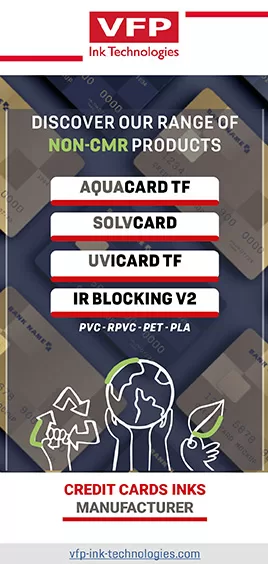
by Jennifer Kohlhepp | CM Magazine Featured
The Magnetic Stripe as a Design Feature in Plastic Cards
 by Aida Aranda, Global Business Development Manager, Composite Materials, Sun Chemical
by Aida Aranda, Global Business Development Manager, Composite Materials, Sun Chemical
Now more than ever, companies are looking to differentiate from their competitors by creating a solid corporate identity and ensuring brand equity. A resilient organization uses these concepts to communicate a clear direction and purpose, help protect the company’s reputation and create a sense of belonging for employees. Additionally, a strong corporate identity and brand generate empathy and loyalty from the general public.
Plastic cards have always been an excellent tool to communicate with both internal and external customers to generate brand recognition and loyalty. No matter how many new developments arise for digitalization of payments, loyalty programs and identification, plastic cards are and will continue to be the method of choice for customers and issuers alike.
However, designing a plastic card that communicates the corporate identity and brand values of an issuer in a 3 3/8-inch-by-2 1/8-inch piece of plastic is a challenge. Card designers and card manufacturers need to align with branding image guidelines and ensure that the design follows the latest trends, all while maintaining a time, cost and quality balance.
Previously, the only way to extract brand value out of the magnetic stripe area in a plastic card was to play with its color, but Pantone® color matching can be costly and time-consuming, making this option less attractive for small to medium production runs.
Luckily, there are new options to win real estate on the card, such as using the magnetic stripe as a design feature. In this article, we explore three innovative new alternatives.
“Bleed-Out” Effect
One new design trend is to have the magnetic stripe “bleed-out” of the edge of the card. Several well-known brands have explored this design resulting in a tremendous acceptance from their customers.
To achieve this, a wider than standard magnetic stripe is used (usually between 14.3mm and 16mm). This design fully complies with current card manufacturing specifications and the card can be encoded with the traditional tracks and read by any standard equipment.
Furthermore, this wide magnetic stripe can have any color imaginable. Working with the magnetic tape manufacturer, it is possible to source these kinds of magnetic stripes in traditional or Pantone® matched colors to have a bolder impact.
By sourcing these wide magnetic stripes already pre-laid onto the overlay, card manufacturers are able to produce cards with a very fast turnover for their customers, no matter the volumes.
Hidden Magnetic Stripes
In Asia (and particularly in Japan), the hidden magnetic stripe has been used for several years. However, its implementation in the rest of the world has seen several barriers, from intellectual property to the practicality of production. But not anymore.
Card manufacturers now have access to overlay sheets that have been pre-laminated with hidden magnetic stripes and primed, ready to be overprinted and then collated for lamination as usual.
This option offers complete freedom of design as the magnetic stripe can be overprinted without losing its function. Card manufacturers can mimic a wide magnetic stripe, a custom color magnetic stripe or fully cover the magnetic stripe for a full hidden design. The design possibilities are endless.
A fully proven and tested manufacturing method ensures that the magnetic stripe maintains its recording and reading capabilities, making this option suitable for any kind of plastic card application. Loyalty programs, access control and financial cards will always maintain their performance requirements for both encoding and readability.
After overprinting the pre-laminated and pre-primed sheets, card manufacturers can proceed to collation using their current process. There is no need to modify the production process any further.
The hidden magnetic stripes are ideal for small production runs and sophisticated designs.
Holographic Effects Using Lamination Plates
To add a touch of distinction and perhaps an additional security feature, some card issuers consider holographic magnetic tape, but quickly give up when confronted with the reality of the cost, minimum order quantities and lead times.
By using a specially designed lamination plate, card manufacturers can add a logo or text and imprint it onto the magnetic stripe during lamination to provide a holographic (dynamic light reflecting) feature.
This process is more cost and time effective than sourcing specially designed holographic magnetic tapes and offers a unique anti-counterfeit feature for production campaigns of any volume.
Conclusion
Magnetic stripes offer a reliable data storage and reading method that can be relied on when other methods are damaged or inaccessible.
However, magnetic stripes are no longer just a “necessary evil” as card issuers and manufacturers can win valuable real estate on the plastic card by incorporating the magnetic stripe as a design feature to bring value and reinforce the corporate identity and brand equity of issuers.
With these three innovative design options for magnetic stripes, brand owners can increase their return on investment at a nominal cost.
About the Author: Aida Aranda is a global business development manager for composite materials at Sun Chemical. She can be reached at +1 708 236 3798 or globalmarketing@sunchemical.com.

